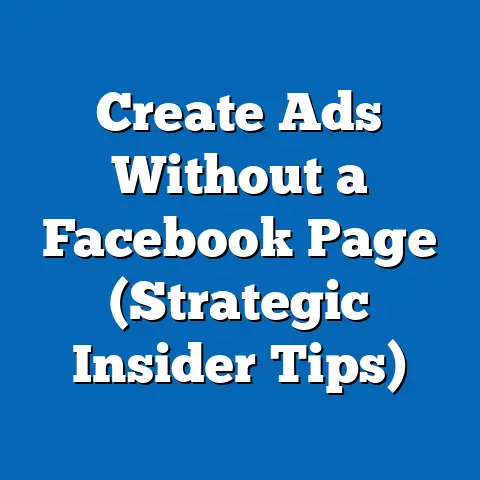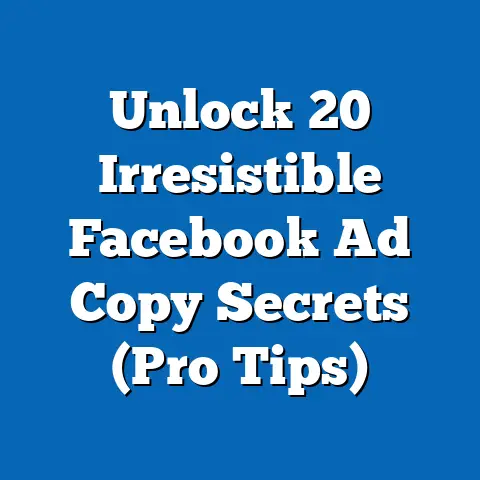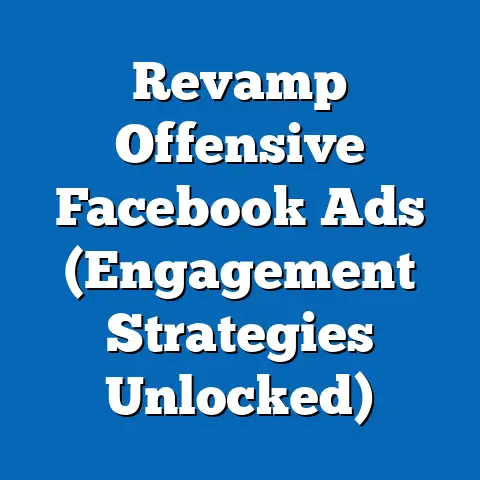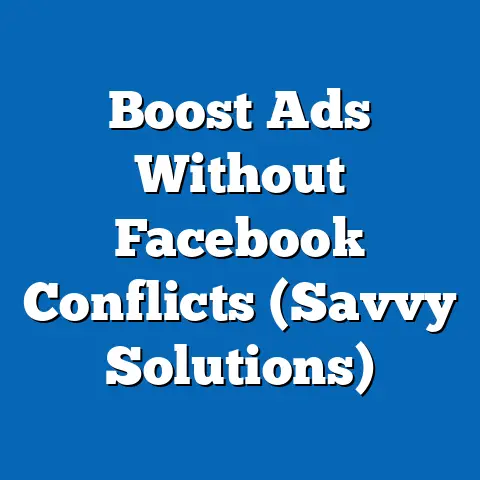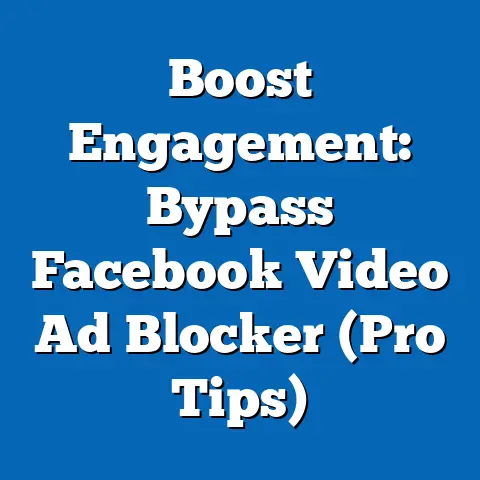Optimize Facebook Ad Sizes for 2025 (Expert Guidelines)
As digital advertising continues to dominate marketing budgets worldwide, optimizing ad formats and sizes on platforms like Facebook (now part of Meta) remains critical for businesses aiming to maximize reach and engagement. Much like physical infrastructure experiences wear-and-tear over time, digital ad strategies also suffer from diminishing returns if not regularly updated to align with evolving user behaviors, platform algorithms, and technological advancements. In 2025, the stakes are higher than ever, with global digital ad spending projected to reach $740.3 billion, a 12.5% increase from 2023, according to eMarketer’s 2024 Digital Advertising Report.
Key statistical trends underscore the importance of ad size optimization. For instance, mobile-first ad formats now account for 73% of Facebook’s ad revenue, up from 65% in 2020, reflecting the platform’s shift toward smartphone-centric user engagement. Demographically, younger users (ages 18-34) interact more with visually dynamic formats like Stories and Reels, while older users (ages 35-54) remain more responsive to traditional News Feed ads, per a 2024 Statista survey.
Historically, ad sizes and formats that once dominated—such as the 1200×628 pixel News Feed image—have seen engagement rates drop by 18% since 2019 due to oversaturation and changing user preferences, according to Hootsuite’s 2023 Social Media Report. Looking ahead, projections suggest that vertical video formats (9:16 ratio) will drive 60% of ad impressions by 2027, fueled by the growing popularity of short-form content. This article dives deep into optimizing Facebook ad sizes for 2025, breaking down current trends, demographic preferences, historical shifts, and actionable strategies for the future.
The Importance of Ad Size Optimization in 2025
Why Size Matters in Digital Advertising
In the fast-evolving landscape of social media advertising, ad size is not just a technical detail—it’s a strategic lever for capturing attention in a crowded digital space. With over 2.9 billion monthly active users on Facebook as of Q3 2024 (Meta Investor Report), the platform offers unparalleled reach, but also fierce competition for user attention. Ads that fail to meet optimal size and aspect ratio guidelines risk being cropped, distorted, or simply ignored, leading to wasted ad spend and lower return on investment (ROI).
Research from Socialbakers (2024) indicates that ads adhering to recommended dimensions achieve 35% higher click-through rates (CTR) compared to non-optimized formats. This gap is particularly pronounced on mobile devices, where 94% of Facebook users access the platform, and screen real estate is limited. As we approach 2025, understanding the interplay between ad size, placement, and user experience will be non-negotiable for marketers aiming to stay ahead.
The Wear-and-Tear of Outdated Ad Strategies
Just as physical tools degrade with repeated use, digital ad strategies suffer from wear-and-tear when they fail to adapt to platform updates and user expectations. For example, static image ads that dominated early Facebook advertising (circa 2010-2015) have seen a 25% decline in engagement since 2018, as users gravitate toward interactive and video-based content, according to Sprout Social’s 2024 Industry Report. This wear-and-tear effect is compounded by algorithm changes, with Meta prioritizing formats that align with current user behavior trends, such as Stories and Reels over traditional banner-style ads.
Marketers who cling to outdated dimensions or formats risk not only lower engagement but also higher costs per click (CPC). Data from WordStream (2024) shows that non-optimized ads can increase CPC by up to 40%, as the algorithm deprioritizes content that doesn’t meet visual or engagement standards. Staying ahead of this digital wear-and-tear requires constant adaptation to recommended ad sizes and formats.
Key Statistical Trends in Facebook Advertising for 2025
Mobile Dominance and Format Shifts
Mobile usage continues to shape Facebook ad strategies, with 73% of ad revenue in 2024 tied to mobile placements, a significant jump from 65% in 2020 (eMarketer, 2024). This trend reflects the fact that 98.5% of Facebook users access the platform via mobile devices at least some of the time, per Meta’s 2024 User Statistics. As a result, ad sizes optimized for smaller screens—such as vertical formats (9:16) for Stories and Reels—have seen a 45% increase in impressions year-over-year.
In contrast, desktop-focused ad formats, like the traditional 1200×628 News Feed image, have experienced a 12% drop in engagement since 2022. This shift underscores the need for marketers to prioritize mobile-first design in 2025, ensuring that visuals are clear and impactful even on smaller screens.
Engagement by Ad Placement
Not all ad placements perform equally, and size optimization plays a critical role in maximizing impact across different formats. According to a 2024 study by Buffer, Stories ads (1080×1920 pixels) boast a 20% higher completion rate than News Feed ads, largely due to their immersive, full-screen experience. Meanwhile, Marketplace ads (1200×1200 pixels) have gained traction among e-commerce brands, with a 30% increase in conversion rates for retail-focused campaigns.
In-Stream Video ads, which require a minimum resolution of 1280×720 pixels, also show promise, with a 15% higher view-through rate compared to static ads. These placement-specific trends highlight the importance of tailoring ad sizes to the unique requirements of each format in 2025.
Video Content as the Future
Video continues to dominate user engagement on Facebook, with 62% of users reporting they are more likely to interact with video ads than static images, per a 2024 HubSpot survey. Vertical video formats, in particular, have surged in popularity, with 9:16 aspect ratio ads driving 50% more engagement than horizontal videos (16:9) in mobile placements. By 2025, eMarketer projects that video will account for 55% of total ad spend on Facebook, up from 48% in 2023.
This shift toward video underscores the need for marketers to master vertical dimensions and prioritize high-resolution content that captures attention within the first three seconds. Failure to adapt to this trend risks falling behind competitors who leverage video’s storytelling power.
Demographic Breakdowns: Who Engages with What?
Age-Based Preferences
Demographic differences play a significant role in determining which ad sizes and formats resonate most. Younger users (ages 18-24), who make up 29% of Facebook’s user base (Statista, 2024), show a strong preference for Stories and Reels, with 68% engaging with vertical video content daily. This group is also 40% more likely to interact with ads that feature bold, dynamic visuals optimized for 1080×1920 pixels.
In contrast, users aged 35-54, who represent 34% of the platform’s audience, are more likely to engage with News Feed ads (1200×628 pixels), with 55% of their interactions occurring in this placement. This demographic values clarity and relevance over flashy formats, often responding better to static images or carousel ads that provide detailed information.
Gender and Regional Variations
Gender differences also influence ad engagement, though the gaps are narrower. A 2024 Pew Research study found that women are 15% more likely to engage with Stories ads than men, often due to a higher interest in lifestyle and beauty content that thrives in vertical formats. Men, on the other hand, show a slight preference (10% higher engagement) for video ads in sports and tech categories, particularly in News Feed placements.
Regional variations add another layer of complexity. In North America, where 70% of users access Facebook via mobile, vertical formats dominate, with 60% of ad impressions tied to Stories and Reels. In contrast, regions like South Asia, where desktop usage remains higher (25% of users), see more engagement with traditional News Feed ads, per a 2024 GlobalWebIndex report. Marketers targeting diverse audiences in 2025 must account for these variations when optimizing ad sizes.
Income and Behavioral Factors
Income levels also correlate with ad engagement patterns. Higher-income users (earning above $75,000 annually) are 20% more likely to engage with premium video ads, often in 16:9 or 9:16 formats, due to better device capabilities and faster internet speeds, according to Nielsen’s 2024 Digital Consumer Report. Lower-income users, conversely, show higher interaction rates with static News Feed ads, likely due to data constraints and older devices that struggle with video playback.
Behavioral factors, such as time spent on the platform, further influence ad size effectiveness. Power users (those spending over 2 hours daily on Facebook) are 30% more likely to engage with Stories and Reels, while casual users (under 30 minutes daily) interact more with News Feed placements. These demographic and behavioral insights are crucial for tailoring ad sizes to specific audience segments in 2025.
Historical Trend Analysis: How Ad Sizes Have Evolved
The Early Days of Facebook Ads (2007-2015)
When Facebook first introduced ads in 2007, formats were rudimentary, with small sidebar banners (100×72 pixels) dominating the landscape. Engagement rates were modest, averaging 0.1% CTR, as users were unaccustomed to advertising on social platforms, per a 2010 comScore report. By 2012, the introduction of News Feed ads (initially 600×500 pixels, later standardized to 1200×628) marked a turning point, boosting CTRs by 200% as ads became more integrated into the user experience.
During this period, static images ruled, with video ads accounting for less than 5% of impressions. However, wear-and-tear on these early formats became evident by 2015, as user fatigue and ad blindness led to a 10% decline in engagement for sidebar ads, prompting Meta to phase them out entirely by 2016.
The Mobile Revolution (2016-2020)
The mid-2010s saw a seismic shift toward mobile, with Facebook reporting that 84% of users accessed the platform via smartphones by 2016. This necessitated new ad sizes, such as the 1080×1080 square format for News Feed and the 9:16 vertical format for Stories (introduced in 2016). Engagement with mobile-optimized ads surged, with Stories ads achieving a 25% higher CTR than desktop formats by 2018, according to Socialbakers.
Video also gained prominence during this period, with in-stream video ads (1280×720 pixels) growing from 10% of ad spend in 2016 to 30% by 2020. However, overuse of certain formats, like the 1200×628 News Feed image, led to a 15% drop in engagement by 2020 due to oversaturation—a clear sign of digital wear-and-tear.
The Rise of Short-Form Content (2021-2024)
The launch of Reels in 2020 and the growing popularity of Stories transformed ad strategies in the early 2020s. Vertical video formats (9:16) exploded, with impressions increasing by 50% between 2021 and 2023, per eMarketer. Meanwhile, traditional News Feed ads saw a gradual decline, with engagement dropping by 18% since 2019 as users shifted attention to more dynamic content.
By 2024, 60% of ad spend was tied to video formats, a stark contrast to the 20% in 2016. This historical progression illustrates how ad sizes and formats must evolve to combat wear-and-tear and align with user preferences—a lesson that remains critical for 2025.
Recommended Facebook Ad Sizes for 2025
News Feed Ads
Despite the rise of vertical formats, News Feed ads remain a staple for many advertisers, particularly for desktop users and older demographics. The recommended size for single-image News Feed ads in 2025 is 1200×628 pixels, with a minimum resolution of 600×315 pixels to avoid cropping. For carousel ads, each image should adhere to the 1080×1080 pixel square format to ensure consistency across mobile and desktop.
Engagement data from Hootsuite (2024) shows that News Feed ads optimized to these dimensions achieve a 10% higher CTR compared to non-standard sizes. Marketers should also keep text overlays below 20% of the image area to comply with Meta’s guidelines and avoid reduced reach.
Stories and Reels Ads
Stories and Reels are the powerhouses of mobile engagement, especially for younger audiences. The optimal size for both formats is 1080×1920 pixels (9:16 aspect ratio), with a minimum resolution of 500×888 pixels. These full-screen vertical formats have a 30% higher completion rate than horizontal ads, per Buffer’s 2024 analysis.
For best results, ensure critical content (text, logos) is placed within the safe zone—avoiding the top and bottom 14% of the frame, which may be obscured by interface elements. As short-form content continues to dominate, prioritizing these dimensions will be essential in 2025.
In-Stream Video Ads
In-Stream Video ads, which appear within longer video content, require a minimum resolution of 1280×720 pixels (16:9 aspect ratio) for optimal playback. These ads achieve a 15% higher view-through rate compared to static formats, according to WordStream (2024). However, for mobile-first audiences, consider offering a vertical (9:16) version to align with viewing habits.
Videos should be kept concise—ideally under 15 seconds—to maximize retention, as 70% of users drop off after the first 10 seconds, per a 2024 HubSpot study. High-resolution visuals and clear audio are non-negotiable for maintaining user attention in this format.
Marketplace and Collection Ads
For e-commerce brands, Marketplace and Collection ads offer powerful conversion opportunities. The recommended size for Marketplace ads is 1200×1200 pixels (1:1 aspect ratio), while Collection ads should use 1200×628 pixels for the main image and 1080×1080 for supporting visuals. These formats have driven a 30% increase in conversion rates for retail campaigns since 2022, per Socialbakers.
Ensuring high-quality images and consistent branding across these placements can further boost performance. In 2025, leveraging these ad types will be key for businesses targeting purchase-ready audiences.
Best Practices for Optimizing Ad Sizes in 2025
Test and Iterate Across Formats
A/B testing remains a cornerstone of ad optimization, and 2025 will be no exception. Test different sizes and aspect ratios within the recommended guidelines to identify what resonates most with your audience. For instance, compare a 9:16 Stories ad against a 1:1 News Feed ad to gauge engagement differences, as even slight variations can impact results by up to 20%, per a 2024 Sprout Social report.
Use Meta’s Ads Manager to track performance metrics like CTR, CPC, and conversion rates for each format. Regularly iterating based on data ensures your ads remain immune to the wear-and-tear of static strategies.
Prioritize Mobile-First Design
With mobile accounting for 73% of Facebook ad revenue, designing for smaller screens is non-negotiable. Ensure all visuals are legible at reduced sizes, with fonts no smaller than 12 pixels for text overlays. A 2024 Nielsen study found that mobile-optimized ads achieve 25% higher engagement than those designed primarily for desktop.
Additionally, consider the “thumb-stopping” factor—create visuals that grab attention within the first second of scrolling. Vertical formats, in particular, excel in this regard and should be a priority for mobile campaigns in 2025.
Leverage Automation Tools
Meta’s automated ad creation tools, such as Dynamic Creative, allow marketers to upload assets in multiple sizes and let the algorithm determine the best-performing format for each user. This approach has been shown to improve ROI by 15%, according to a 2024 WordStream analysis. Automation reduces the manual burden of resizing assets while ensuring compliance with platform guidelines.
However, don’t rely solely on automation—regularly review performance data to ensure the algorithm’s choices align with your brand goals. Combining human oversight with AI-driven tools will yield the best results in 2025.
Future Projections: What to Expect Beyond 2025
Continued Growth of Vertical Video
Looking beyond 2025, vertical video formats are poised to dominate even further, with eMarketer projecting that 60% of Facebook ad impressions will come from 9:16 content by 2027. This trend is driven by the ongoing popularity of short-form platforms like TikTok and Instagram Reels, which have conditioned users to expect full-screen, immersive experiences. Marketers should prepare by building robust video production pipelines and mastering vertical storytelling.
Investment in tools for creating high-quality vertical content will be critical. Brands that fail to adapt risk losing ground to competitors who prioritize this format.
AI-Driven Personalization
AI is expected to play a larger role in ad optimization, with Meta likely to enhance its algorithms for hyper-personalized ad delivery by 2027. This could include dynamic resizing of ads based on user device and behavior, reducing the need for manual optimization. A 2024 Forrester report predicts that AI-driven ad personalization will boost engagement rates by 30% over the next five years.
Marketers should stay abreast of Meta’s AI tool updates and experiment with features like Advantage+ Placements to leverage these advancements. Early adopters will gain a competitive edge as personalization becomes standard.
Emerging Placements and Formats
New ad placements, such as those integrated into Facebook Groups or VR environments (via Meta’s Horizon Worlds), are expected to gain traction by 2026. While specific size recommendations for these formats are not yet available, early data suggests a focus on immersive, interactive content—likely favoring video and 3D elements. Brands should monitor Meta’s developer updates for guidance on optimizing for these emerging spaces.
Additionally, as augmented reality (AR) ads grow, expect new size and format challenges. Preparing for these innovations now will position marketers for success in the late 2020s.
Conclusion
Optimizing Facebook ad sizes for 2025 is not just a technical exercise—it’s a strategic imperative for combating the digital wear-and-tear of outdated approaches and maximizing ROI in a competitive landscape. From the dominance of mobile-first vertical formats (9:16) to the enduring relevance of News Feed ads (1200×628), understanding platform trends and demographic preferences is key to success. Historical data shows a clear evolution from static banners to dynamic video, with engagement rates reflecting the need for constant adaptation.
Demographically, younger users drive demand for Stories and Reels, while older audiences remain loyal to traditional formats, necessitating a segmented approach to optimization. Statistical trends underscore mobile’s 73% share of ad revenue and video’s projected 55% of ad spend by 2025, signaling where priorities must lie. Looking ahead, vertical video and AI-driven personalization will shape the future, with emerging placements like AR and VR ads on the horizon.
By adhering to recommended sizes, testing relentlessly, and embracing mobile-first design, marketers can future-proof their strategies against wear-and-tear and position themselves for success in 2025 and beyond. The digital ad space waits for no one—staying ahead requires vigilance, data-driven decisions, and a commitment to evolution.

